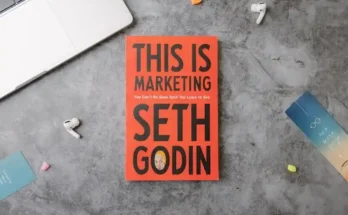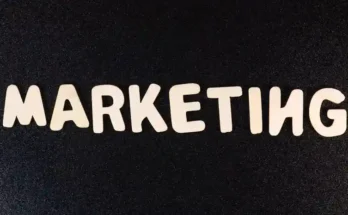Marketing is everywhere, yet often invisible. It’s the jingle that plays in your head long after a commercial ends. It’s the story behind the sneaker you wear, the emotion in a Super Bowl ad, or even the subtle positioning of a product on a store shelf. And more than ever, marketing is no longer about shouting the loudest—it’s about telling the best story.
In a world oversaturated with content, the challenge isn’t just grabbing attention. It’s keeping it. The modern consumer is not only well-informed but also highly selective. They scroll, skim, skip—and yet, the right message still manages to stop them in their tracks. That moment, that pause, that connection—it’s where marketing magic lives.
The Shift from Product to Purpose:
Once upon a time, marketing was all about features. If a product was faster, shinier, cheaper, marketers would say it—loudly and repeatedly. But as industries evolved and competition became global, differentiation based purely on features became nearly impossible. Enter the age of branding.
Today, consumers don’t just buy what you sell; they buy why you sell it. Purpose-driven brands that stand for something beyond profit are capturing hearts and market share alike. It’s why a coffee shop isn’t just selling espresso—it’s selling sustainability. A shoe company isn’t just making sneakers—it’s empowering communities.
Marketing has become less about persuasion and more about alignment. The message must align with the values of the audience, not just their wallets. When companies lead with purpose, people listen with intent.
-
The Digital Landscape
It’s no secret that digital has revolutionized marketing. Once confined to television spots and magazine spreads, marketing now thrives across platforms and devices, running 24/7 in a constantly evolving ecosystem. But digital is not the easy shortcut it once appeared to be. It’s complex, dynamic, and brutally honest.
Social media is the frontline. Brands are expected to be witty on Twitter, inspirational on Instagram, informative on LinkedIn, and viral on TikTok—all while being authentic. One wrong step, and audiences don’t just ignore you—they publicly call you out.
Search engines demand relevance and authority. Algorithms reward content that truly serves a purpose—articles that educate, videos that engage, or websites that perform seamlessly across all devices. SEO is no longer about keywords alone; it’s about intent, speed, and value.
Email marketing has matured, too. Gone are the days of generic mass blasts. Now, it’s about personalization. The subject line must speak directly to the individual. The content must address their unique needs. And the timing must be just right.
The digital world is ruthless but fair. If your message resonates, the audience amplifies it for free. If it doesn’t, it disappears into the void—fast.
-
Data
Marketing may be an art, but it’s increasingly a science as well. Behind every successful campaign lies a trove of data: who clicked, how long they stayed, what they shared, where they came from. This data is more than just numbers—it’s behavior, insight, and potential.
Analytics now play a critical role in shaping strategy. Heatmaps show where people look on a page. A/B tests reveal which headline performs better. Customer journey maps trace the exact path someone took from ad to purchase. All of this helps marketers make smarter decisions—not based on gut, but on evidence.
But data isn’t just about optimization. It can also be a powerful storytelling tool. When presented creatively, data can humanize a brand, reveal shared truths, and spark conversation. Infographics, interactive dashboards, and even clever data-driven social posts can bridge the gap between insight and inspiration.
Still, the real key is balance. Data should inform creativity—not stifle it. Marketers must resist the temptation to become spreadsheet slaves and remember that humans, not algorithms, are their ultimate audience.
-
Emotion
In the end, no matter how advanced the tools or how complex the strategy, marketing boils down to one simple thing: making people feel something.
Whether it’s joy, nostalgia, hope, excitement, or even outrage—emotion fuels action. People buy from brands they love, share messages that move them, and stay loyal to those who make them feel seen.
This emotional connection doesn’t come from a clever headline or a pretty photo. It comes from authenticity. It comes from knowing your audience so well that your message feels less like marketing and more like a conversation between friends.
Great marketing isn’t about selling. It’s about serving. It’s about solving problems, sharing stories, and offering value—again and again.
The Power of Community and Co-Creation:
One of the most profound shifts in marketing has been the movement from broadcast to dialogue. No longer are brands the sole narrators of their stories. Today’s most powerful messages are co-authored by communities.
User-generated content, influencer collaborations, reviews, testimonials—all contribute to a richer, more trustworthy brand narrative. When a real person tells your story, it carries a weight no polished campaign ever could.
Community-driven marketing requires a mindset shift. It’s about listening more than speaking. It means building platforms, not just campaigns. It means rewarding engagement, encouraging feedback, and sometimes stepping back to let your audience take the spotlight.
This is not loss of control—it’s the evolution of trust. And trust is the most valuable currency in the marketing world.
Conclusion:
Marketing is no longer a department or a job title. It’s a living, breathing craft that intersects psychology, technology, creativity, and culture. It’s part data, part intuition, part strategy, and part serendipity. It’s as much about listening as it is about telling.
In an age of endless choice, marketing is the bridge between products and people. And the best marketers are not those who speak the loudest—but those who listen the closest and care the deepest.
The future of marketing isn’t just digital. It’s human. And that’s exactly what makes it so powerful.




